Plant of the Month: September 2023
|
| Green Hawthorn |
Cratægus viridis L.
|
(ROSACEÆ); Rose Family
|
| In Seattle, Green Hawthorn is extremely rare, and its largest specimens may be axed this month, so I am featuring them. Cratægus consists of more than 220 species of hardy small trees or shrubs. Eastern North America has most of the species (150+). All produce berries called haws, and nearly all are thorny. Leaves are generally small and jaggedly lobed. The flowers are small, white (pink in a few cultivars), primarily in May and June. Haws are usually red and less than an inch long. Rugged, twisting, branches form dense heads, usually spreading rather than upright. Hawthorns are pioneer trees and loathe shade. The name Cratægus came from Greek krataigos, a flowering thorn --in turn from kratos, strength, referring to the strong and hard wood. Hawthorn derives from Old English haga, a hedge, and thorn: hedgethorn. |
| As ornamental trees hawthorns offer seasonal beauty and often attract birds. Their foliage is frequently more interesting and healthier than that of most cherries (Prunus) or crab apples (Malus), two related genera. Hawthorns are long suffering and endure pruning well, so can be used for hedging. Many of the species are able to reproduce from seed as genetically identical individuals, a process called apomixis. Botanists used to describe nearly every variant as a separate species; despair ensued as well over 1,000 species were described (the heyday was from 1896 to 1910, when 886 new species were described). Now the trend is to recognize comparatively few species, but grant them great variability. Nonetheless, the decision as to what constitutes a species and what a mere variety is vexing, and, frankly, arbitrary. Cratægus viridis was first named in 1753 and grows mainly in the SE United States. It also is called Southern Hawthorn and Tall Hawthorn. It is not any greener or taller than many other hawthorn species. |
| Green Hawthorn, at least in its variant I refer to in this case, offers a robust constitution, attractive trunk, and pleasing fall color. Its floral beauty is only average; and some years it sets few berries. Few thorns are on these trees. It is impressive that in a summer of exceptional heat stress on Seattle trees, these Green Hawthorns, even with zero watering, look healthy and beautiful. |
| In the second edition of Trees of Seattle I mention that on E McGraw St, at Montlake School, 4 Green Hawthorn street trees exist, along with 8 smaller Washington Hawthorns. At the east end are also small stunted Yoshino Cherry trees. Since the Green Hawthorn cited on Densmore Avenue N has been gone for years, these Montlake School specimens are the largest I know in Seattle. Three young trees on E Allison St are the 'Winter King' cultivar. The Montlake School specimens likely date from the 1970s, and might have been rootstocks whose intended tops died. |
| Green Hawthorn has been suggested as one parent of the very beautiful Shining Hawthorn (Cratægus nitida), but whether Shining Hawthorn is a species, a variety, or hybrid I have not looked into recently. |
Right now, the largest Montlake School Green Hawthorn measures 28.5 feet tall, 34.5 feet wide, its trunk 3 feet 7 and an eighth inches in circumference. Regarding the photos below, those four showing green leaves date from September 12th; the three yellow fall color photos are from October 15th 2016. I asked Seattle City Arborist Nolan Rundquist why these trees are slated to be cut down, given that they are 1) healthy, 2) handsome, 3) extremely rare, and 4) the largest of their species in Seattle. Nolan is looking into it, and possibly can save them. If not, at least we now have a photographic account.
Back |
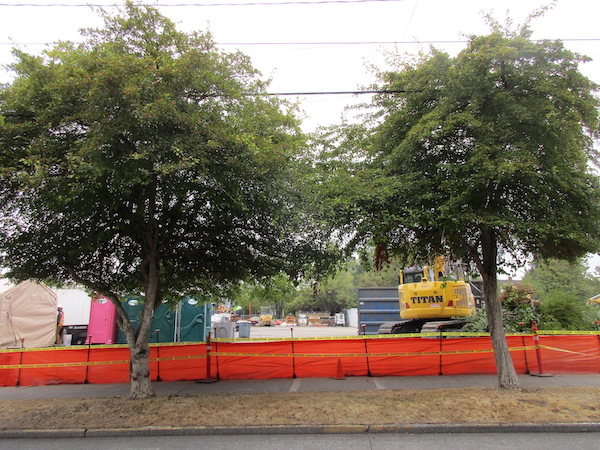
Green Hawthorns ; photo by ALJ |
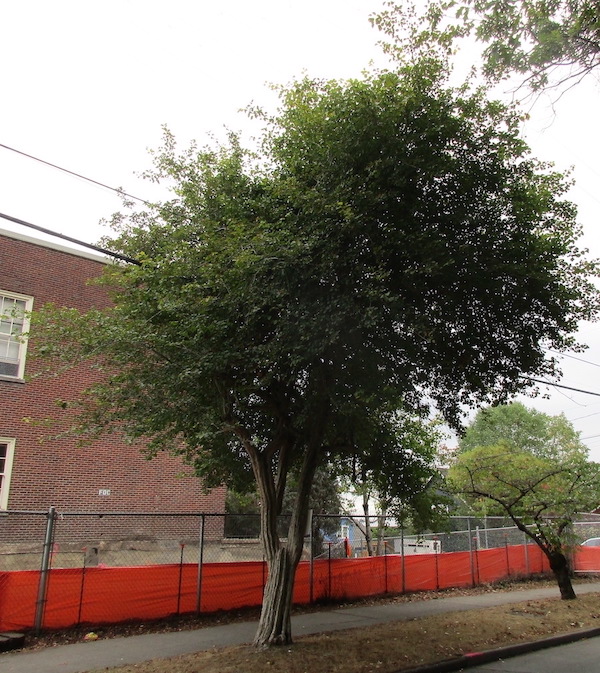
Green Hawthorn ; photo by ALJ |
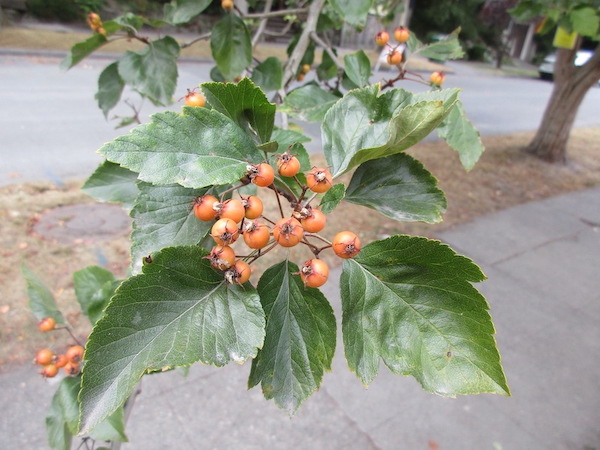
Green Hawthorn berries ; photo by ALJ |
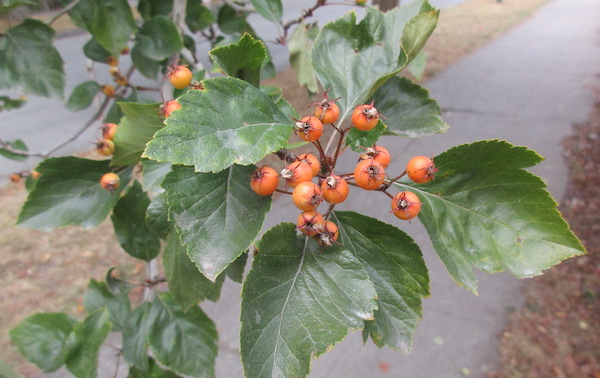
Green Hawthorn berries ; photo by ALJ |
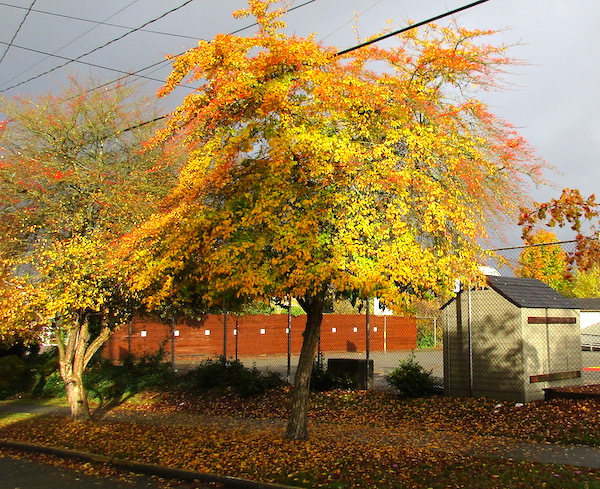
Green Hawthorn fall color ; photo by ALJ |
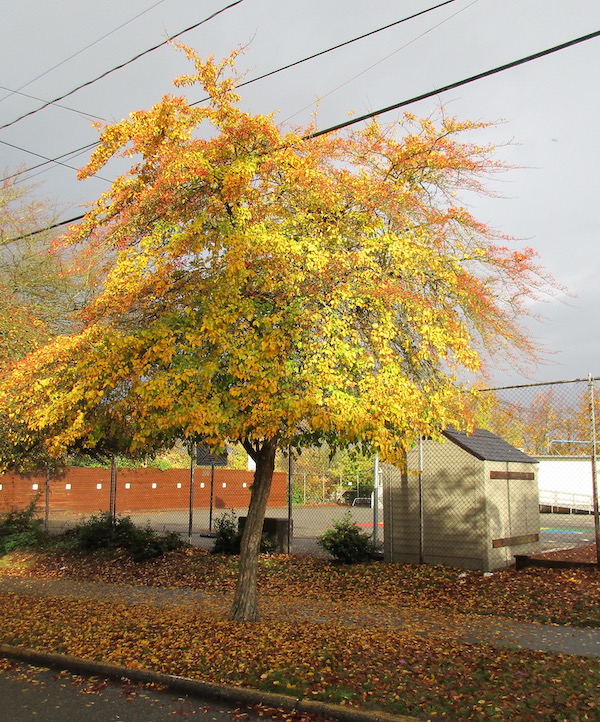
Green Hawthorn fall color ; photo by ALJ |
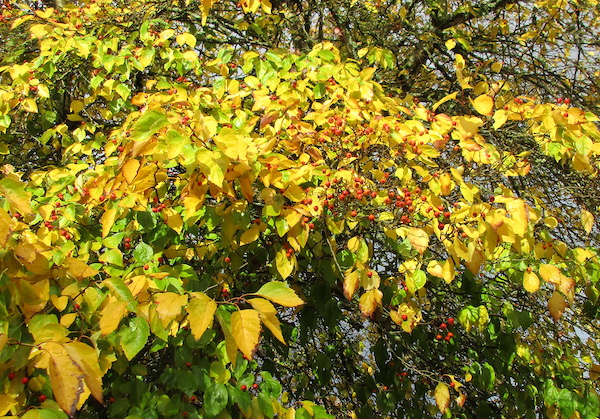
Green Hawthorn fall color ; photo by ALJ |
|
|

